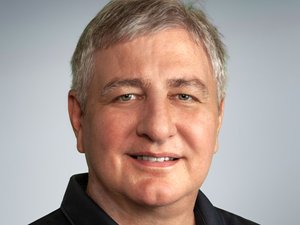As I grip onto a handle bar above a 3-foot opening that divides tearing asphalt and a rigid seat, 65-year-old Tanom Motors co-owner and CFO Dave Young hits the gas, shifts into gear and guns a newly built, $54,000 Invader down Route 29.
Sitting just six inches above the rolling landscape, the vehicle shakes, the Suzuki Hayabusa 1,340 cc motorcycle engine located directly behind me roars, and the narrow, two-seat, 3-wheel auto-cycle cuts down a rural stretch of Virginia freeway leaving cornfields, rusted roadside billboards and curious backseat bystanders in a blur.
It’s difficult to get a grasp on how fast we’re going since the ride is so low to the ground, like a Formula 1 racer, and my eyes are nervously focused on the lack of a door to my right. The speedometer hits 80 mph. It’s unlike any ride I have taken on either a motorcycle or in a sports car, and it’s obviously a far cry from the domestic 2 hour drive I completed just hours prior in the family hand-me-down—an 11-year-old Lexus LX.
The test drive nears its end, and we enter back into Culpeper, Va., a quiet, rural, suburban town of less than 20,000 that lays on the outskirts of Manassas—75 miles from the District and a world apart from its stark political aura. This is where Tanom Motors, led by founders and serial entrepreneurs Sandy Hall and Dave Young have founded their experimental auto manufacturing facility, showroom and office.
It’s a town where neighbors wave to one another, police officers are known by their first names, the town center is a staple of community social life, the high school football team is paramount and time seems to move a minute slower—reference cliche Americana. Suffice to say, Culpeper is not where you would expect an auto-cycle brand that produces expensive, loud, rebellious and flashy, high-performance 3-wheel vehicles to be headquartered.

Scene
On the way back to the Tanom Motors facility, we pass through the brick-laden town center of Culpepper, which over the last several years has experienced rapid development and growth due to the establishment of several nearby data storage farms, manufacturing plants and a subsequent growth in well-paying jobs. I notice that a number of familial buildings are being renovated and that various new real estate projects are just beginning.
Young, with a reserved smile and an air of pride, points to a theatre-turned-events space, several restaurants and another commercial office, telling me he, too, is the owner of these properties. The renovation of Culpepper isn’t a side project, both of Tanom Motors' co-owners are big proponents of this movement, rather Young briefly said he desires to spur development in his own neighborhood.
I briefly joke that Young, a long time defense contractor that once developed IT and biometric security systems for the military, should just run for mayor if he is this involved in the future of Culpepper. He offers a charitable and brief laugh, but doesn’t respond to my jest.

Throughout town, I watch from the passenger seat as people wave at Dave over the loud engine—paying salutations as the vehicle roams around corner mom-and-pop bakeries, barber and coffee shops.
The townspeople remain seemingly unsurprised by the sight of a thunderous, hybrid chopper in bright fire red. As of it is an everyday occurrence. Because it probably is.
Moments later, just miles from town, a large Ford F-150 truck pulls up at a stop light, towering over the low Invader. The driver, in a white, dirt-lined cut-off t-shirt at the steering wheel rolls down the window, leans over and exclaims “man, that thing is badass. What is it?”
This is a relatively common reaction that Young and other Invader owners receive on an almost daily basis, he tells me. Casual observers typically wonder what the vehicles is, how much it costs and who made it. “Yeah, those are the most common questions I get,” said Young.
But this backdrop, the town of Culpeper, is just part of the story.
Aside from being a richly complex and quickly growing institution in an otherwise wallpaper town, Tanom Motors is battling against national, auto-cycle related legislative efforts that could undermine their business after being in productions for just four months. In this sense, they’re a bit like Tesla; unconventional, controversial, immensely exciting and led by dynamic executives, with big dreams, that oversee multiple businesses.
Tanom Motors is Virginia’s Tesla.
What is an auto-cycle?
Today, the auto-cycle industry is tantamount to that Can-Am commercial you saw four years ago on television at 1 a.m after Leno. It is relatively unknown, still-nascent and perhaps wholly misunderstood by the general public. But that perception is beginning to change, as new players like Tanom Motors shape the niche market.
According to the Los Angeles Times, “[auto-cycle] sales appear to be increasing rapidly and at premium prices.”
To begin: an auto-cycle is essentially a three-wheeled, enclosed vehicle that’s part motorcycle and part car. Most come complete with a steering wheel, seat belt and brake pedals. This revolving definition changes though, depending on what U.S. state you’re traveling through. And as such, the law that looms over these vehicles is, for lack of a better term, complicated.
At the moment, S.685 (the auto-cycle safety act), a bill introduced to the Senate in March, aims to provide a national definition for auto-cycles—thereby setting a standard for the way local law enforcement and department of motor vehicles should categorize the ride. The bill simply defines “auto-cycle" as a motor vehicle with three wheels, an enclosed occupant compartment and a steering wheel, which meets applicable federal motor vehicle safety standards.
In the end, the legislative/policy issue for auto-cycles has circled around whether they should be held to motorcycle or car related safety standards—including mandatory manufacturing designs that make airbags, the need to wear a helmet and power-brakes a default, among other things.
Currently, 26 states have enacted or are currently developing classifications. With that being said, setting rules at the Federal level will ensure consistency and likely encourage consumer confidence. In terms of the private sphere, large auto insurers like State Farm and Geico have already built insurance plans for auto-cycles—pricing them somewhere between motorcycle and automobiles.
Both Young and Hall said, however, that they aren’t worried about the pending national regulation, because 45 of the 50 U.S. states have already instituted regulation that say an enclosed auto-cycle (like the Invader) does not require passengers to wear a helmet. This helmet stipulation for riders is admittedly a big deal— it’s a big threat towards sales and a further point of friction for luxury customers—but so far the bullet has been dodged.
Hall told DC Inno, “whether we’re classified as a motorcycle or car, we’ll be prepared to execute in this unique market going forwards. I am not too worried about it, honestly.”
While it’s difficult to predict the type of auto-cycle legislation that may come forth via Congress, it’s important to note that these three wheel vehicles—which are sometimes called reverse trikes or simply trikes, instead of auto-cycles—are not a new revelation.

For reference, the engineering and introduction of the auto-cycle ancestor may have first begun with the advent of the motorized trike/cyclecar/microcar after World War II. These early century, maligned “cars” were originally viewed primarily as economy models, but the idea faded between the creation of more affordable sedan options via models designed by early carmakers like Ford and Austin.
Similar to the electric car industry, the auto-cycle boasts a disparaged lineage of sorts. It’s not until semi-recently that the concept has attracted real, substantial commercial interest.
The dominant names in the space include Polaris, BRP/Can-Am (Bombardier), Elio, Venom, Campagna, Harley-Davidson and Motor Trike. With the exception of Elio, these brands advertise their products as recreational, secondary vehicles to auto enthusiasts.
Baby-boomers, older motorcycle riders that desire more stability and atypical sports car customers searching for a unique thrill, are the most common customers, Dave said of the auto-cycle industry.
“The three-wheeled market is growing very quickly. In fact, Bombardier recently announced the selling of their 100,000th CAN-AM Spyder. People who never considered a two-wheeled motorcycle are embracing three-wheeled vehicles as a way to have fun,” Young explained, “I firmly believe that the Tanom Invader represents the top of the line in three-wheeled vehicles in terms of styling, fit and finish; performance; handling; and just plain fun. Given that, Tanom believes it is important to grow relatively quickly to establish our niche as the best on the market.”

Who is Tanom
Founded in 2009, Tanom Motors created its first, handmade prototype from a combination of motorcycle and car parts in 2010. Shortly thereafter, the team packed their bags and headed to the famous, Las Vegas-based SEMA dealer-only auto show to showcase their garage project.
The annual Vegas event is understood, within the industry, to be a rite of passage for new auto and motorcycle manufacturers. The traveling crew—which included Hall, Young and Hall’s brother, a lead mechanical designer—and their 3-wheel vehicle were well received by the crowds. Dealerships from across the nation voiced their interest in carrying the Invader on their lots.
“The Tanom booth was busy all four days and everyone was very excited about the Invader. This convinced me of the demand for three-wheeled vehicles and the growing market potential,” Young recounted.
Like Tesla, Tanom Motors elected to legitimize its brand by first producing a top-end, luxury model, catering to a relatively limited but wealthy demographic.
Young described Tanom Motor’s flagship vehicle, the Tanom Invader TC-3 Coupe, as the “Bugatti of auto-cycles.” Today, the 25-person company carriers six different models, ranging from $54,000 to the upper $70,000s.
As time progresses, the Culpeper company plans to launch an economy model, that will be priced at roughly $30,000, but that project is still two years from being realized, Hall told DC Inno.
Young added, “top-of-the-line comes with a price point that limits it to demographics with significant discretionary income. Tanom also recognizes that there is a much larger market currently being pursued by Polaris, Bombardier and others with vehicles at a lower price point with less styling, performance and handling characteristics. In two years, Tanom Motors plans to enter this lower price point market.”
To date, Tanom Motors has been in production for just four months. The company has built 15 vehicles in total, selling about ten. Hall said that for the company to be profitable, today, it must sell about 130 vehicles per year.
Invaders are assembled in Culpepper, while the custom frame, composite panels and hardware is either manufactured or shipped from Detroit, South Carolina, and/or within HQ. Wiring, hardware, sound system parts, gear shifting parts, the gas tank and other elements are purchased in bulk from automobile aftermarket parts retailers in the U.S. The heart of the Invaders, its loud engine, is disassembled from a Suzuki hayabusa bike and comes from Japan.
Invaders are currently in stock at three dealerships nationwide; in Florida, Indiana and Virginia. The next line of locations will soon open in South Carolina, Arizona and Nevada—showing a clear focus on warmer weather regions and states holding favorable auto-cycle laws.
There are over 100 interested/prospective automobile dealers, at the moment, but it will take several years before Tanom Motors has the production capabilities to pump out models to a majority of states, Young explained.
Next year, Tanom Motors expects to manufacture and sell about 130 Invaders, Hall told DC Inno. In addition, the 25-strong Tanom Motors team will likely double in size with 12 months, Hall said, with hires across plant personnel, sales, marketing, design and deployment divisions.
Marketing efforts, at the moment, are primarily grassroots-based and involve direct contact at auto shows, racetracks, by word of mouth and with test drives. This is an area that will change though, Hall and Young voiced, as a greater focus on digital advertising, outreach and wider campaigns is planned. With that being said, the two Tanom Motors executives said the guerrilla marketing-esque strategy suits them well.
Marketing and educating a substantial customer base on what auto-cycles are, today, is the company's greatest challenge, Hall told DC Inno. The price point will also inherently bring difficulties, but Tanom Motors is committed to creating buzz, sales and recognition through raw sports performance before pursuing a large consumer demographic.

The Invader
Former Virginia governor Bob McDonnell may have best described the essence of the 200-horsepower Invader in 2014, when he first came across the vehicle prior to production. Last fall, the local lawmaker—who spearheaded legislation to adjust state code, allowing the Invader to be produced in Culpeper—toured the Tanom Motors plant and reportedly said “[the Invader] does reek of speed when you look at it. I think it will turn a lot of heads on the highway.”
The first Tanom Motors series vehicle, the Invader, is sold in six different modes; the TC-3 Coupe, TC-3 Limited Edition, TC-3 Red Rocker (a signature Sammy Hagar model), TR-3 Roadster (non-coupe), Type-R Stage 1 and Type-R Stage 2. You can order the vehicle in seven different colors: black, champagne white, fire red, racer yellow, gunmetal, navy blue and lime green.
All of these different models are more or less souped-up versions of Tanom’s TC-3 Coupe, with slightly different hardware upgrades and in the case of the Roadster, no hardcover top. Customers can further augment their vehicles to be specifically built around other preferences via Tanom Motors’ online ordering platform.
Standing less than 5 feet tall, 6.9 feet wide and 13.3 feet long, the Invader is a beast of a machine. It carries a four-cylinder Suzuki motor straight from the backbone of a new hayabusa motorcycle. With top end gearing installed, the TC-3 can go from zero to 60 MPH in 3-4 seconds, comparable to a new sports cars.
The vehicle hauls a 12.5 gallon gas tank, offers about 27 mpg and consumes premium, high octane (92-93) grade gasoline. The TC-3 weighs about 1500lbs and comes standard with an aftermarket navigation and audio system. A forged steel front suspension features two 18in. cast aluminum wheels, supported by a Wilwood disc brake package. The molding/panels which fit the vehicles exterior are made from a tough, plastic composite, which is lighter and stronger than fiberglass.
The aforementioned engine is a Suzuki Hayabusa 1,340 cc (82 cu in) that is removed, repurposes and customized to fit the Invader frame from a Suzuki hayabusa motorcycle. These motorcycles are purchased in bulk by Tanom Motors and are then disassembled for usable parts. Everything from electrical wiring and handlebars to brake lights are then packaged and stored for transportation. The company has a deal with an aftermarket motorcycle parts retailer, with whom it sells recycled parts as an alternative revenue source. Each Tanom Motor’s Invader uses component from a Suzuki motorcycle.




